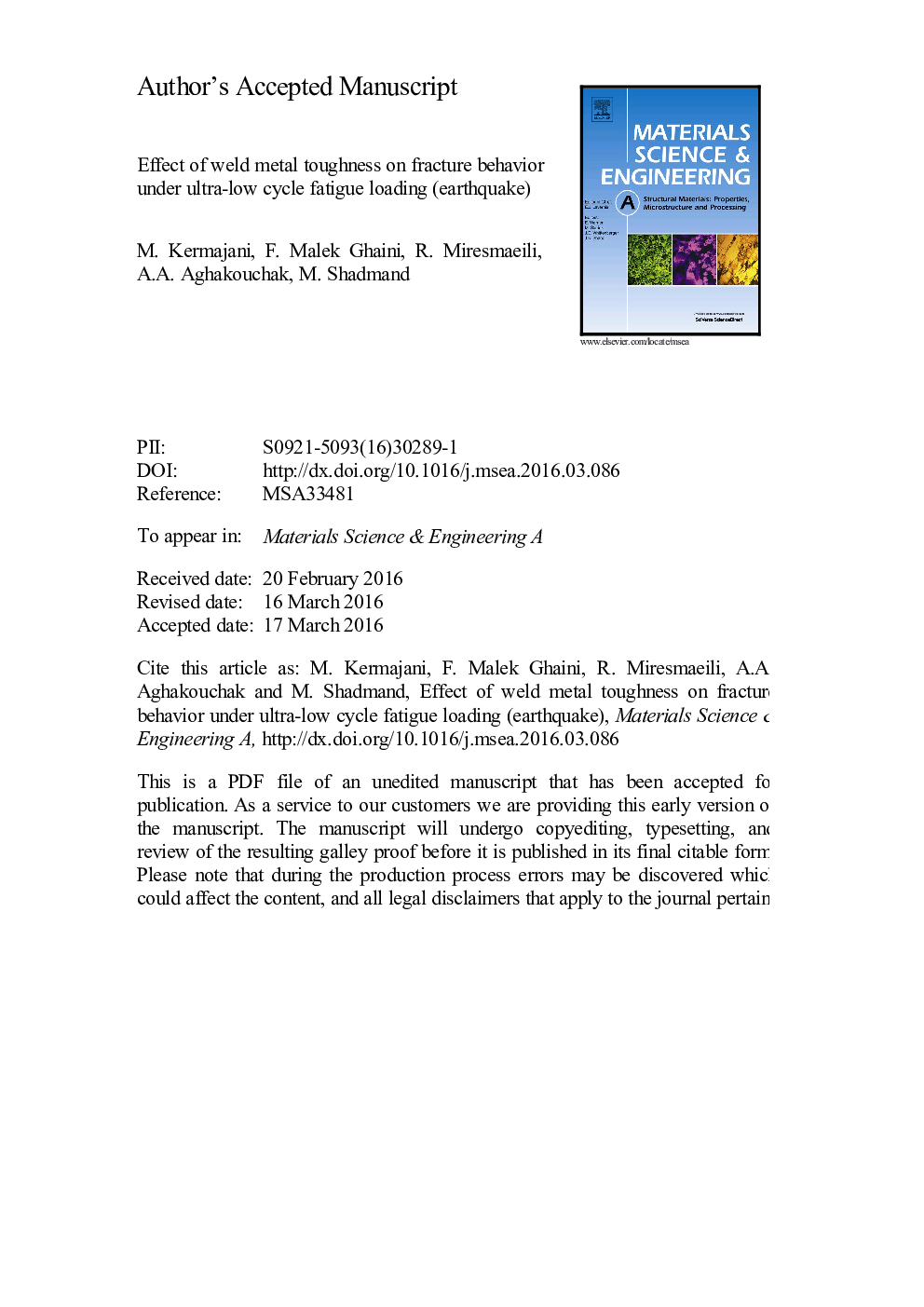| Article ID | Journal | Published Year | Pages | File Type |
|---|---|---|---|---|
| 7975326 | Materials Science and Engineering: A | 2016 | 14 Pages |
Abstract
Results from 12 ultra-low cycle fatigue tests performed on the weld metals of both toughness and non-toughness rated grades are presented. Fracture resistance under these loadings seemed to be dependent on materials' toughness, displacement amplitude, and stress state triaxiality, while the toughness effect was more highlighted at high stress levels and concentrations. To study the effect of microstructures on these failures, supporting ancillary tests including all-weld tension coupons, Charpy V-notched impact tests, and optical and scanning electron microscope analyses were performed. The favored microstructures appeared to be those which absorbed energy by plastic deformation and, hence, hindered void formation and/or could avoid crack propagation by deflection. Considering the response of the tested materials to cyclic loadings and the requirements of the materials specified in AISC341 Provisions could question the adequacy of these requirements for weld metals. However, the role of microstructural features like inclusions would be the same in both the Charpy impact tests and ultra-low cycle loadings.
Related Topics
Physical Sciences and Engineering
Materials Science
Materials Science (General)
Authors
M. Kermajani, F. Malek Ghaini, R. Miresmaeili, A.A. Aghakouchak, M. Shadmand,
